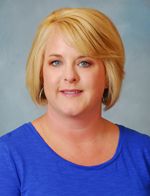Practice manager, practice owner, master of metamorphosis
This practice manager set out to achieve her dream of owning a practice and discovered that change and success can go hand in hand.
I decided years ago that I wanted to own the practice my father founded 42 years ago. I went back to school in 2005 and received an MBA for additional ownership preparation. But one obstacle to feeling comfortable with ownership was the fact that I wasn't a veterinarian. So we began a search for a veterinarian who was willing to partner with me in purchasing the practice.

Tricia EagleIn March of 2013, my dream became a reality when Dr. Tara Bell and I purchased the practice. Dr. Bell and I work great together. She lets me manage as I see fit and I let her practice her style of veterinary medicine. When needed, we come together to make any necessary decisions.
In our first fiscal year of ownership, we increased revenue by 20 percent, new clients by 11 percent, new patients by 14 percent and total visits by 11 percent-all double-digit increases at a time when industry experts were seeing more declines in all these areas. We wanted as seamless a transition as possible, and we did not lose one team member or doctor in the transition process. In fact, we were able to hire another full-time associate only two months after the purchase.
Pulling off paperless
It didn't take long for us to figure out that we needed new practice management software, as the system we were using was not going to accommodate our vision for a paperless practice. The team jumped in to help decide what software would work best for the way we wanted to practice veterinary medicine.
Once we came to a consensus, I made sure the entire team worked together to create a paperless system that was efficient and effective for our needs. We set up training and learning centers for each department so that when we went live everyone was ready for the change. These training sessions included free meals since we tried to hold them only during our down time-we believe strongly in work-life balance and did not demand off-hours training.
Controlling a construction project
In our second year of ownership, we also decided to more than double the size of our hospital and add a sister business to our enterprise. After months of planning-which involved all team members in deciding how best to design our new facility-we began construction in July 2014.
Our renovation and expansion included more than doubling the size of our existing building and then connecting the two buildings into one seamless structure. While managing the practice during this massive change, my main purpose was to keep all staff positive even though what and where they were used to performing their tasks was changing on a monthly, weekly-sometimes even daily basis. We encouraged all team members to include their input on paint color, type and color of cabinetry, placement of rooms, equipment and so on. This gave them "ownership" over the process.
Dr. Bell and I stayed in close contact about every construction decision so that we both felt our input was important and included. We worked in the old building while construction was accomplished on the new building, then moved into the new building while the original structure was completely gutted and renovated. During the process we never had to close due to unforeseen issues. We credit the success of the project to the whole team's willingness to help out whenever needed.
Championing change
Some previous experience with change had given me and the rest of the team an awareness that we could not just survive but thrive in dire circumstances. In the midst of the 2007 to 2009 (and a little beyond) recession, a doctor who had been at the practice for 10 years left unexpectedly. We had three other doctors at that time; two were part-time and not surgeons. That left us with one full-time doctor, who was the only surgeon. A few months later, that doctor-who was also the sole owner-developed a macular hole in his eye that left him unable to practice at all for almost three months.
Due to some increased marketing on my part (I believe you don't discontinue your marketing in a recession-you stay consistent with your message and your business stays consistent), we were very busy. We had unplanned medical emergencies with our patients plus full appointment loads for wellness visits. Our team buckled down and rode the wave together. A relief doctor who used to be our associate helped out with surgeries while the other part-time doctors filled in as possible to keep the practice afloat.
Even though many publications were telling veterinary practice owners they might not survive the recession, I proved to our owner through teamwork that we could make it through-and he would have a healthier practice to come back to once he was well. Our family-style atmosphere has helped us time and again to overcome change and challenges as we lean on each other through the good and the bad times. I am proud to be a part of the Ashby Animal Clinic Family!
Tricia Eagle is practice manager and co-owner of Ashby Animal Clinic in Harrisonburg, Virginia.